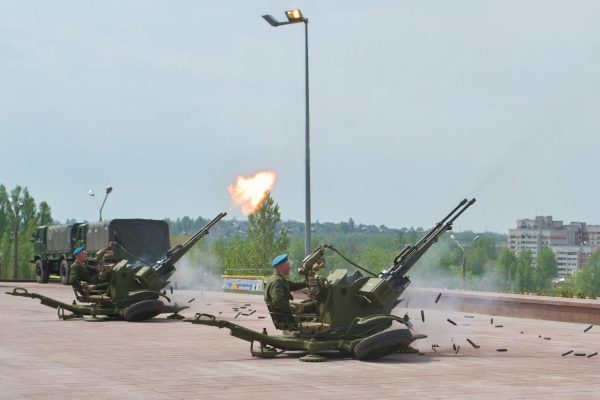This past summer has been the subject of many developments on the front line between Ukraine and Russia. New fronts have opened in the north, where serious maneuver warfare is being seen again for the first time since the war began. Russia is gaining ground in the east, and Ukraine has hit Moscow and other infrastructure with drone strikes.
On Aug. 6, the Ukrainian Army (UA), in response to Russian border raids aiming for Kyiv, invaded the Russian Oblast (the Russian equivalent to a state) of Kursk from northern Ukraine. This is the biggest change in the front since Ukraine pushed Russian forces off the Western bank of the Dnieper river, and established bridgeheads on the west. The UA passed through two Russian defensive lines and met little resistance; even now, weeks later, they are still seeing success, in some parts of the front walking into abandoned Russian positions. Meanwhile, they have launched smaller-scale attacks in the neighboring Oblast, Belgorod.
Despite previously having applied restrictions on what Ukraine can do with their weapons, the West has yet to make any attempt to stop Ukraine. Instead, countries like the United States and Germany, two prominent supporters of Ukraine, have yet to offer serious resistance to the incursion. The idea behind this attack was revealed, after almost two weeks of secrecy, to be the creation of a buffer zone to prevent any further cross-border attacks by Russia from the north. The incursion into Kursk has been the scene of some of the largest Russian mass surrenders of the war, with the UA in one instance even taking a hundred Russian soldiers prisoner at once. Said surrenders are also contributing to the lack of response from Russia, since more Russian troops have to be diverted to adequately compensate for the surrenders.
Meanwhile, drone strikes have significantly ramped up since Ukraine first marched into Kursk. Ukraine directed one of the biggest drone strikes since the start of the war at Moscow, the Russian capital; another development as a result of the Ukrainian incursion into Kursk. In the East, Russian forces have gained momentum and have seized and begun to seize Ukrainian towns–one being the town of Niu-York, a stepping stone to the strategically important, town of Pokrovsk, being only about 60 kilometers away. Pokrovsk’s importance lies in its positioning: the town acts as a major supply hub for the UA and is a key defensive stronghold for the Ukrainian defenses in Donetsk.
Because of Russian troops approaching the city, a larger humanitarian issue has begun to develop, as Ukrainian civilians are faced with the choice of leaving their homes behind, or staying and risking Russian occupation, and possibly dying during occupation. UA soldiers in the East have started evacuating civilians who live in the area, now numbering in the tens of thousands, and a mandatory evacuation for children has been issued. The situation remains so dire that Ukraine has requested an emergency response from NATO to help with the issue.

On the other side of the Ukrainian border, another humanitarian issue stands. The destruction of civilian infrastructure and the displacement of Russian people within Kursk. Upwards of 120,000 people have fled their homes in the Kursk Oblast, many fleeing to the city of Kursk, the administrative center of the region. Seven of the 28 administrative divisions within Kursk are being evacuated, as well as one division within the Belgorod Oblast, which is also experiencing minor fighting. Drone strikes rake the area of conflict, and many Russians fear what could happen to them if they stay in their homes. According to Reuters, Russian officials stated that 200,000 people were being evacuated from the Kursk region following the Ukrainian incursion.
“I feel just very scared. It’s a horrible thing what’s happening. I don’t really know what’s going to happen. And I just hope, that people stay safe.” Russian senior Jacob Rapoport said.
The Russian invasion of Ukraine continues, coming up on it’s third year. The conflict gives a glimpse into the future, not only into how future conflicts may be fought, but into the humanitarian cost of these conflicts.








